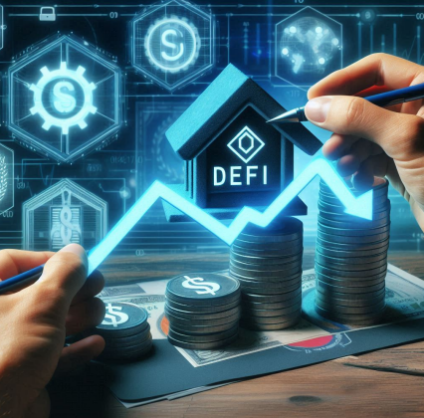The crypto market is notorious for its volatility. Since Bitcoin's inception in 2009, we have witnessed dramatic boom and bust cycles that leave investors either thriving or devastated. The ability to learn from such cycles will be the making or breaking factor for success or failure in a changing world. This article will give you an understanding of some of the important lessons we've learned from the past of the crypto market and how these lessons should be applied for better investment decisions.

Understanding Boom and Bust Cycles
Boom cycle definition for an uninterrupted rise in price irrespective of quantity demanded, optimism or speculation. Instead, there is a cycle of oversupply, in which prices fall drastically if triggered by panicky selling, changes in regulations, or market corrections that can be triggered by the affordance derived from the training data. These cycles are characteristic of the crypto market due to the speculative and underdeveloped nature of the crypto market. For example, in 2017, Bitcoin bull market, BTC rose from $1000 in January to more or less of $20,000 in December. However, as of early 2018, it dropped well below $6,000, wiping out trillions of market value.
Lesson 1: Don’t Fall for FOMO (Fear of Missing Out)
One major driver of crypto booms is FOMO. Because prices are now rising ever faster, many investors scramble and lose the opportunity, too tired not to miss out by sitting it out. Unfortunately, this often leads to buying at the peak.
- Practical Example: In 2021, Bitcoin reached an all-time high of $68,000 in November. Scores of retail investors have signed up, and they're planning to see by the end of the month, Bitcoin (BTC) to $35,000 in January 2022. Those who bought at the peak faced significant losses.
- Actionable Tip: Instead of acting on emotions, conduct thorough research. Employ dollar-cost averaging (DCA) where investments are allocated over time and attempt to avoid buying at market peak.
Lesson 2: Diversification is Crucial
Relying heavily on one asset can be risky. A well-diversified portfolio can minimize losses during market downturns. In the case of crypto, diversification may apply across coins, across industries (DeFi, NFTs) or in area of confusing asset classes (stocks, bonds).
- Quantifiable Metric: According to the Messari report, portfolios with a mixture of some of the best-performing crypto assets-Bitcoin, Ethereum, and niche altcoins-outperformed single-asset portfolios by more than 25% in 2022.
- Actionable Tip: It is preferable that no more than 20 to 30% of your total portfolio is allocated to any single cryptocurrency. This spreads risk and protects against extreme market fluctuations.

Lesson 3: Stay Informed About Market Sentiment and Regulation
It is largely market sentiment and, naturally, regulatory developments and so on, that can have a large impact on crypto prices. Positive mood, through the medium of news or public endorsement, can actually cause price increases. Conversely, regulatory crackdowns often lead to downturns.
- Historical Example: In 2021, China's cryptocurrency mining law led to a 30% decline in Bitcoin price over a few weeks. However, markets recovered thanks to positive news from around the world, such as El Salvador's adoption of Bitcoin as a legal tender.
- Actionable Tip: Stay current with appropriate and reputable news outlets and with regulatory trends. Real-time information can be accessed via monitoring Twitter accounts of influential individuals (e.g., CZ (Binance) and Vitalik Buterin (Ethereum).
Lesson 4: Understand the Role of Liquidity
Liquidity is the degree in which one asset can buy or sell at its quoted price. In small market settings, even petty trading task can lead to significant price response and risk in a bust cycle.
- Case Study: It is when Terra (LUNA) liquidity crashed in May 2022 that truly bad liquidity turned matters to a worse position. Also, anxiety could become part of the dark side as bad liquidity makes markets believe that a bad crash is permanently coming. Prices fell above and below $85 and $1 respectively for the week and it led to the market cap loss of $60 billion.
- Actionable Tip: Before investing, check the liquidity of the cryptocurrency. The volume of trading and number of exchanges listed are shared across a plurality of platforms, they will thereby improve liquidity.
Lesson 5: Prepare for Long-Term Volatility
Crypto markets often experience extreme price swings. Nevertheless, by exploiting historical data, it seems that long-term investors are therefore better off than short-term traders.
- Data Insight: According to a report by Glassnode, investors with Bitcoin held for longer than 4 years had a 90% likelihood of achieving profitability, irrespective of market conditions.
- Actionable Tip: In the long run, person whose views are strong on the long term potential of a cryptocurrency should use the HODL (Hold On for Dear Life) strategy. In this technique, one may be spared from panic selling at market low and be able to take advantage of long-term gains.

Future Prospects
The management of the crypto market, which is founded on a cycle of bull and bear market, has this effect. Resist the urge to buy into FOMO, diversify, stay in the know, and expect a rough ride. Through the learning of the historical market patterns and utilizing the strategies, better investment decisions could be made and the risk of significant losses could be avoided. Remember the fact that crypto investing is not about market timing, but market time. Just wait, be educated, and approach this all with the rule of thumb of yesterday's cycle cycles as a guide to refuse future cycle success.





